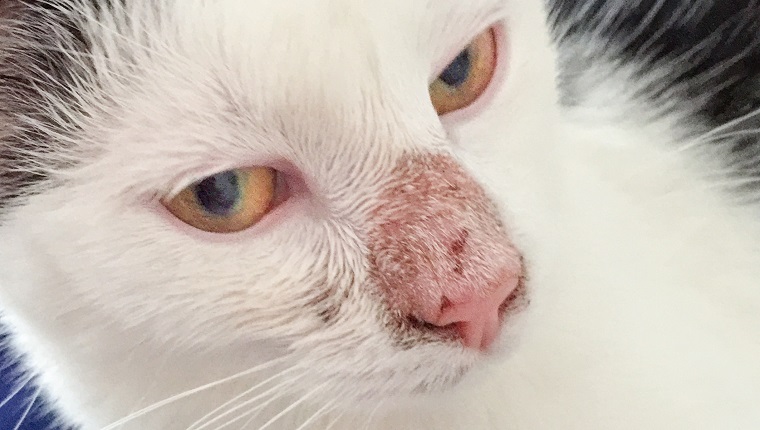Ringworm in cats is a fungal infection. Contrary to its name, the condition has nothing at all to do with actual worms.
The technical name for ringworm in cats is dermatophytosis. It often leaves a red colored circle around the infected areas.
If you see the signs of ringworm in your cat, then you must get to a veterinarian for a proper diagnosis and treatment. Here’s what you should know about the symptoms, causes, and treatments for ringworm in cats.
Symptoms Of Ringworm In Cats
Ringworm in cats usually presents itself as a red ring-shaped marking on the cat’s skin.
Beyond that, some of the other common symptoms include:
- Scaly skin
- Patches of hair loss
- Skin that looks red and inflamed
- Nails look infected
Note that some cats are capable of carrying ringworm without ever showing any outwards signs of the disease.
Causes Of Ringworm In Cats

The cause of ringworm in cats usually comes from being infected by the spores of a fungus called Microsporum canis.
Unfortunately, it’s very easy to pick up the fungal infection due to its prevalence all around us. You’ll find it in soil and fur and even attached to blankets and bedding.
After a cat becomes infected by the fungus, it starts to feed on the animal’s skin, hair, and nails.
Treatments For Ringworm In Cats
If your vet suspects that your cat is suffering from ringworm, they’ll conduct a thorough physical examination to detect signs of the disease. They’ll pay particular attention to any patches of hair loss or skin that looks infected.
The vet may use a black light, which can reveal the presence of the Microsporum canis fungus on infected cats. They may also take hair and skin samples to test for signs of the fungus.
Once confirmed, a case of ringworm in cats is usually treated by a combination of topical medications designed to combat fungi, along with oral medication to help any infected areas recover.
Before bringing your cat back home, vets also advise that you thoroughly clean the cat’s sleeping and hangout areas, along with ridding your home of as much stray or shed fur as possible.
Has your cat ever suffered from ringworm? What steps did your vet take to help get rid of the infection? Let us know in the comments section below!




